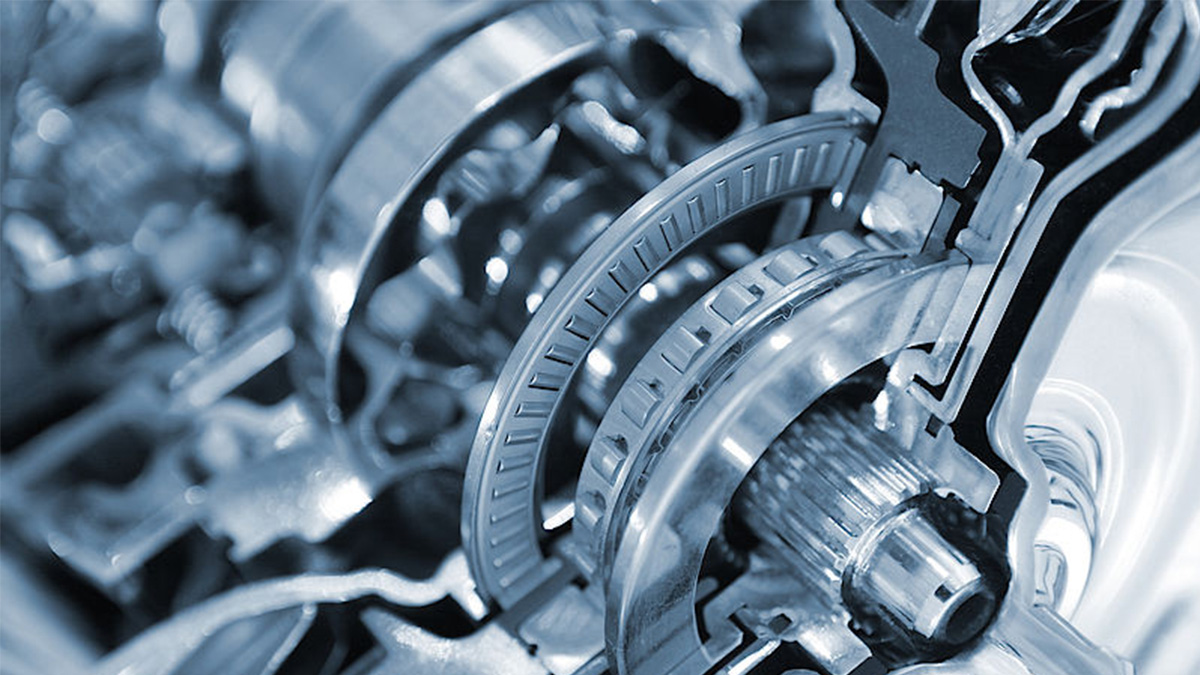Machining is one of the most important cutting process used in any manufacturing industry. There are many different processing methods and each of these methods may require the use many different cutting tools. With each tool corresponding to a different cutting process, often problems can occur which not only affect the machining accuracy, but also the quality of the workpiece, and can even cause accidents. Understanding the cutting processes, machine tools used, and factors affecting accuracy are important for avoiding problems. Understanding the basics of cutting processing and smart tools will make your machining more effective and require less effort.
What Is Machining?
Machining refers to the procedure of using some sort of tool to remove material from a workpiece to give the material the desired shape. There are two general categories of processing which machining can be divided into; milling and turning. Milling is the process where the workpiece is held in a fixed position and a tool is moved to remove material from the workpiece. Turning is where the workpiece is rotated, and the tool maintains a set position to cut the workpiece as it rotates.
Some cutting processes such as turning, drilling, broaching, etc. will use tools with single blades, while other procedures such as cutting, grinding, and polishing often use tools with several blades. Various types of abrasive tools are used for grinding processes. By selecting the most appropriate tools for the processing required, a broad range of products can be manufactured with high precision and low surface roughness for a broad range of applications.
During machining, the temperature of the workpiece may be regulated to obtained a desired effect on the workpiece. When machining is performed at ambient temperature it is called cold processing. Hot processing is when the work is done at a temperature higher than ambient temperature. This is usually done when some form of chemical reaction is desired in order to change the properties of the workpiece material such as for hardening the workpiece.
Machine Tools:
Machine tools come in many designs and are produced to meet to various specifications. Many current machine tools are digitized to meet set specifications according to international standards. By being familiar with these standards you can choose machine tools that will achieve the best results for your machining needs. Some manufacturers will improve on technology and develop their own specialty tools to face market competition. When operators are familiar with the tool options available, they can adapt their machine parameters to achieve high-precision machining.
Factors Affecting Machining Accuracy
- Many parameters need to be maintained in order to maintain quality of production. Compromised quality in the workpiece can result from errors in the machining tools. Spindle rotation error, guide rail error, and transmission chain error are problems that can occur as a result of improper installation or from wear on a machine tool over time. All these will affect manufacturing efficiency and accuracy of the workpiece to be processed.
- The external force of the machine tool: When a force is applied to an object, the object will generate a force that resists deformation, which is called rigidity. To perform high-precision processing, the rigidity of the machine tool is important. The more rigid the machine tool, the higher the dynamic precision. The rigidity of the machine tool itself as well as the rigidity of the workpiece needs to be considered. The rigidity of the machine tool will mainly depends on its material, cross-sectional shape, size, etc., while the rigidity of the workpiece material, will depend on its geometric size, hardness, processing method, and surface roughness.
- Thermal deformation: The object will expand with the change of temperature, and the degree of change from heating will vary with different materials. Therefore, it is necessary to pay attention to the change in temperature during processing and understand the relationship between the operating time and temperature of the machine tool and workpiece.
- Use of cutting fluid: Cutting fluid is important for machine tools. It can provide effective protection for workpieces and tools, reduce tool wear and improve the machining accuracy of workpieces.
- Influence of speed: Under normal circumstances, the higher the cutting speed, the higher the efficiency, but it will be restricted by the hardness, plasticity, carbon content, tool hardness, and geometric properties of the workpiece. Therefore, the speed should be adjusted according to the tool and workpiece material to ensure machining accuracy.
Milling Machine Processing:
Milling Machine Processing is any of the procedures performed on a workpiece using some form of cutting tool attached to a rotating shaft. The tool intermittently contacts and cuts the workpiece to machine the surface of the workpiece into a flat or curved surface. Other various operations can be performed such as drilling and grooving. Milling machines can be divided into horizontal and vertical types according to the spindle direction of the tool. One type of machine called a gantry-type milling machine has a structure that straddles a horizontal long-bed and can simultaneously machine with multiple cutters.
-
General purpose milling machine: A general-purpose milling machine is a milling machine that is manually operated by the operator. When moving the relative position of the tool and the workpiece, the operator needs to judge and set the machining conditions such as the position, feed, speed, and cutting amount of the tool. Fine and high-quality finished products can be completed manually.
-
CNC milling: CNC milling is a machining process that uses a computer to control the processing conditions. The machine's built-in computer performs CNC controlled operations automatically using 3D CAD/CAM software. They save labor and can be used in the machining of complex shapes.
-
Machining center: A machining center refers to a machine tool with CNC control. It is a multi-axis, compound machine that can be installed with different tools on multiple spindles. A machining center makes it is possible to simultaneously perform different types of cutting, drilling, or surface machining. By combining linear motion with rotary motion, the machining center can complete machining of more complex shapes.
-
CNC gear processing machine: Using the CNC gear processing machine with a built-in computer, it is possible to process and manufacture gears of various shapes and sizes, such as those used in clocks and automobiles.
Lathe Processing:
Lathe processing is a procedure performed on the outer periphery of a workpiece as it turns. The workpiece can be machined into round or tapered shapes, and threads and grooves can also be cut into the workpiece.
-
General lathe: This is a lathe in which the operator manually feeds and replaces tools. The lathe uses a fixture called a collet to hold the workpiece as it is spun it at high speed for machining. Very compact desktop lathes can be used on a workbench to machine very small parts.
-
CNC lathe: Lathe machining using computer-control, allows even beginners to perform machining with high quality. Since it automatically replaces multiple tools, it also increases work efficiency. CNC automatic lathes can be programed to process irregular shapes such as cams.
The Basic Process of Cutting:
-
Cutting action: Cutting refers to the action of using a tool to cut off a part of the target workpiece. The cutting action involves the action of successively shaving off strips of material from the workpiece. The tool, such as a turning tool, moves in a straight line across the surface of the workpiece. The workpiece is then fed into the machine in a direction perpendicular to the cutting direction, and the cutting action is repeated. Successive repetitions of this action create a plane surface on the workpiece.
-
Processing and resistance: Since the tool and the target are in contact with each other during processing, and the forces interfere with each other, resistance occurs. When working, resistance produced must be considered. When cutting with a turning tool, the resistance will vary depending on factors such as the material of the workpiece, the cutting area, or the type of cutting tool. The cutting area will affect the resistance, and special attention must be paid to the size and shape of the area being processed. When drilling, the type of drill (tip shape), torque resistance, drill rotation speed, feed rate, and material of the target, must all be considered.
-
Processing and speed: Work efficiency as well as quality control are important issues. Machining increases efficiency by increasing the processing speed. But increasing the speed may have negative effects such as increased drag, and thermal deformation, etc. Increasing the machining speed may also shorten the life of the turning tool, increasing the frequency of tool changing required, making the cost per machining unit higher. Therefore, it is very important to consider how speed will affect the tools performance and lifespan.
-
Processing and temperature: As we mentioned earlier in resistance and speed, when performing machining such as cutting, the contact between the target and the tool generates heat. This may increase the temperature inside the target, affecting machining accuracy or tool durability. The faster the processing speed, the more heat is generated. The larger the processing area, the higher the friction, which will increase the temperature. Therefore, when performing machining, it is important to keep an eye on temperature changes. Cutting fluids play an important role in the temperature management of machining. They can reduce the wear between the target and the tool, therefore reducing the heat generated. In the past, most the cutting fluids were oil-based, but now, due to the rising awareness of environmental protection, water-soluble cutting oils have become the mainstream. In addition, because machining requires a large amount of cutting fluid, most of them will use a circulating type device to filter the used cutting fluid and reuse it.
Matters Needing Attention in Cutting Processing:
As the resistance generated by different tools is varies from tool to tool, the influence of resistance must be considered during processing. Different processing methods can be considered to choose the process best suited to give the best efficiency, improve tool durability, and product the best quality.
Improper rotational speed will lead to problems such as increased resistance, thermal deformation, and shortened tool life. Before processing, adjust the speed according to the job situation, pay attention to temperature changes, and make good use of cutting fluid.
The key to striking a balance between speed and quality machining is not based on just a single factor. Correct selection of cutting tools, arranging reasonable procedures, improving environmental conditions, and selecting high-performance cutting fluids can ensure efficient and high-quality machining. Smart tool handling and proper monitoring of the cutting process will optimize the process, improve the quality of the finished product, reduce costs, and even help to avoid accidents.






.png)







